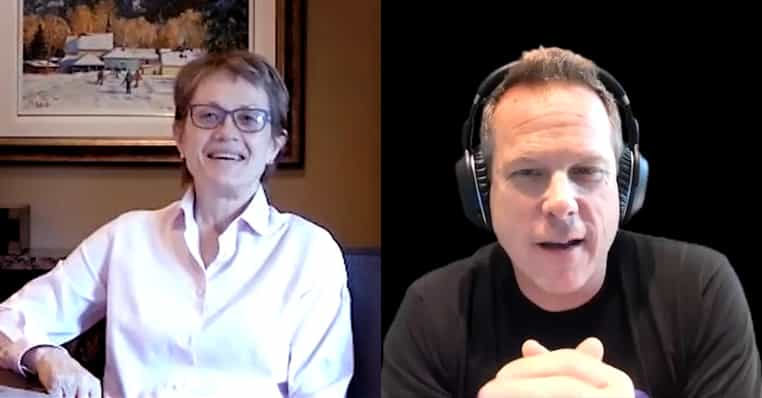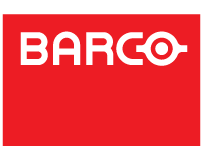Jul 22, 2020 6:00:00 AM
Audio for the evolving higher education classroom – a rAVe interview

Posted by Nureva
In the wake of COVID-19, what will higher education look like in the fall? This is the question that Gary Kayye, founder of rAVe, and Nancy Knowlton, CEO of Nureva, sat down to discuss last month for rAVe’s LAVNCH WEEK 2.0.
During the interview, Nancy shares her perspective as someone who’s spent time teaching in a higher ed classroom. She explains why she remains an optimist, even in these challenging times. And she and Gary share how Nureva® audio can be an excellent match for many of the tough scenarios schools are currently facing.
Interview transcription
Gary Kayye: I’m excited to be joined by a massive solution problem solver here – Nancy Knowlton, Nureva CEO and global sales at Nureva. Nancy, how are you?
Nancy Knowlton: I’m great, Gary. Thank you.
Gary Kayye: For those that are in higher education, you are going to love their solution. Because as you move into this new world of teaching in the fall, post-COVID-19 (hopefully, post-COVID-19), you’re going to need a product like the HDL300. I have the HDL300 installed in two of my classrooms at the University of North Carolina. I can demonstrate those for you, but Nancy, I’ll let you give me the elevator pitch on what Nureva’s audio technology does for a classroom.
Nancy Knowlton: The thing about our audio technology is, it’s totally different from what’s in the market. We call it Microphone Mist™ technology. We take a powerful processor, we pair it with a number of physical microphones and we blast out a series of virtual microphones into the classroom or meeting space. And we can pick up audio whether the speaker is standing in a single space or moving around the classroom. So, it’s the power of the technology that truly differentiates what we do.
Gary Kayye: I think one of the things you mentioned earlier this week when we talked on UCC day was that with a lot of the microphone technologies out there, instead of selecting which mic to use and selectively deciding through some sort of algorithm which one to turn on, you’re listening all the time and focusing the audio on what is most important. So that’s the key thing. What’s nice about this is wherever you’re standing, you can hear the audience.
Now, as we move into this new post-COVID-19 world, we’re going to have a bunch of different kinds of scenarios. I’d say there are three big scenarios that most universities and a lot of K-12 will be using. The first scenario is, professors in the classroom teaching HyFlex. Half the students in person. Half the students online.
In my case, I have a class of 52 students – 26 will be there on Monday, in person, and 26 online. On Wednesday, the 26 that were at home are now in person, and the other 26 are learning from home. And I’m there live. In that case, I don’t have to be miked. I don’t have to have any sort of PTZ camera following me around. And I can go anywhere, so I don’t have to relearn or turn anything on. That’s using the Microphone Mist technology.
The other two scenarios are a little less obvious. One is the professor is teaching remotely with the students in the classroom because maybe he or she is older and at risk. The third is where the student, as we get back to normal, where students are in multiple locations all around the world, for that matter, and they’re having to jump into a classroom where it’s being taught both remotely and live. But in all three of these cases, your technology is a solutions provider.
Nancy Knowlton: Yeah, you bet. I think something that everybody now appreciates, because they’ve all been remote, is how exhausting it is to have a poor audio quality experience. If you expect that students are going to be engaged while remote, you need to provide that high-quality experience. You need to think as well about the instructors, and how much of their brain do they have to apply to technology?
Do they need to remember to stand facing in a particular direction? Do they need to fumble with batteries in a headset that have just worn out? Any one of those things, I think, can throw off a lecturer in a classroom situation. So we try to make the technology quite carefree from both a user’s perspective and the student’s perspective – but perhaps most importantly from the IT manager’s perspective.
Gary Kayye: Those three are the key. I do agree with you that the professor is the key there because if something doesn’t work technologically, it completely throws off your cadence. I’m a great example of that.
You’ve made a commitment. I know you’ve made a commitment to education that informs a lot of your business outlook. Will you tell our watchers a little bit about that?
Nancy Knowlton: I tell this at great personal risk, but I was a university professor for four years. Usually, people break down into fits of laughter when I say I taught computer science (I used to be more of a geek than I am today). But it’s the deep understanding of what takes place in the classroom and marrying the needs of both sets of users in the classroom with what technology can do that really is the commitment that we as an organization have made.
I’ll tell you today there’s a level of scrambling as organizations are trying to adapt what the administration is determining is the best path forward for postsecondary institutions. We’re trying to come in with solutions that are going to solve the problems that people have.
Gary Kayye: It’s a sense of urgency, too. You’re a great company to work with, having personal experience with that sense of urgency, because you are a bunch of humans that have lived it. Like you said, you were a university professor, so you know exactly what we’re going through.
School days are traditionally about optimism and idealism. I definitely agree with that. Do you still think there’s a place for those qualities in the current landscape? Are you optimistic?
Nancy Knowlton: I certainly am. One of those old expressions is “Necessity is the mother of invention.” We don’t know what the future is going to bring. We just know that it’s going to be different from what we’ve experienced to this point. I look and say, “Hey, there are possibilities in the unknown that we haven’t even imagined yet.”
Some of my young friends who are disappointed that their classes are going to be 100% online, at least in the fall semester this year, are thinking about, “Where in the world could I live as a consequence? How do I build my own experience? How do I take that responsibility?” And while it might have been hard to be an exchange student, hey, you can be an exchange student. You can create your own experience.
I would say there’s probably a greater challenge to some instructors who maybe are wondering what opportunity technology creates. Well, where are the different ways for students to work together? How can students learn to collaborate?
In the business world, Gary, we always talk about collaboration as if people know how to collaborate. But I would say that there’s probably a great opportunity to teach students specifically how to be great collaborators coming out of university. So, sure, I’m an optimist. What new ways of working can come out of this experience?
Gary Kayye: And, in fact, interestingly enough, I think we’d probably both agree that a lot of the issues we face now can be solved with technology. We can literally say, “Look. Technology can solve a lot of this.” Look at what technology did for the world over the last three months. And as you said, audio – this kind of communication is awesome, but if there’s no audio, it doesn’t matter. No matter how great the video looks, the audio is the key. That’s why the A comes before the V in AV.
You’re sitting in a really good position. Nureva’s a great company. If you don’t know who Nureva is, check them out at nureva.com. Nancy, thank you for supporting at Edtech Day. Thanks for all you do for the industry. And I would highly encourage all the higher education facilities and facility managers and IT managers looking at this today to look into the HDL300. I promise you – you will not be disappointed. That’s a personal guarantee for me.
Classroom audio, evolved
Nureva audio is built for the new reality in higher education. Our systems are quick to install. They automatically adapt to changing classroom configurations. And with thousands of virtual microphones, they let you use every corner of your spaces and be heard – no external mics needed.
Posted by
Nureva



















![Gary Kayye, with a purple background and the rAVE [PUBS] logo and an introduction that the webinar is hosted by Gary Kayye of rAVe [PUBS] with James Rempel and Rob Abbott of Nureva.](https://www.nureva.com/hubfs/images/blog/education/01130-24-10-Webinar%20Learning%20in%20a%20HyFlex%20World%20at%20UNC/01105-24-rave-webinar-blog-feature2-1200x628.jpg)